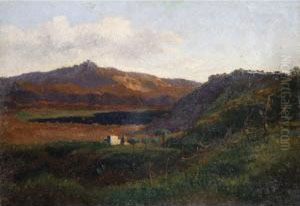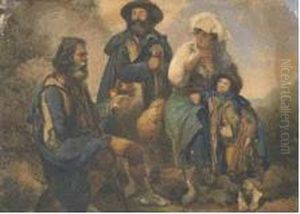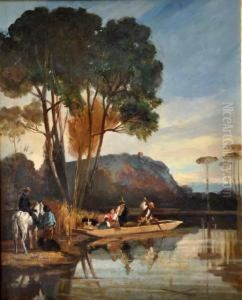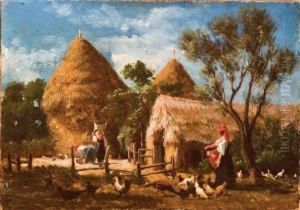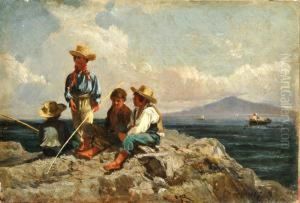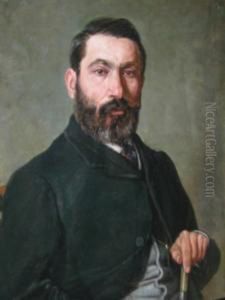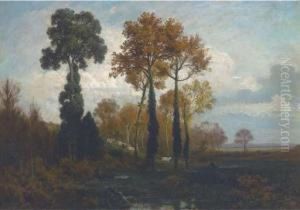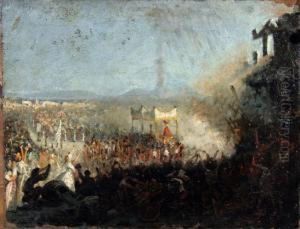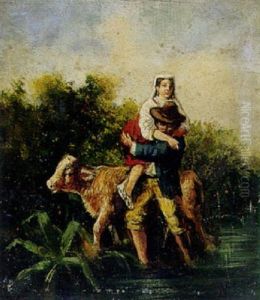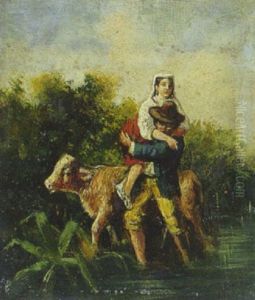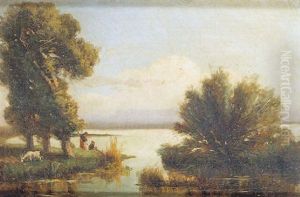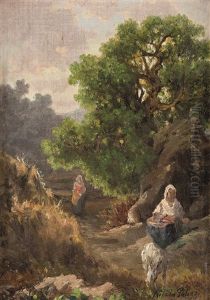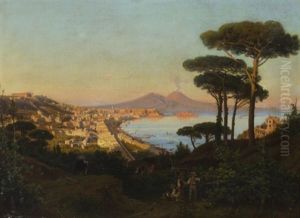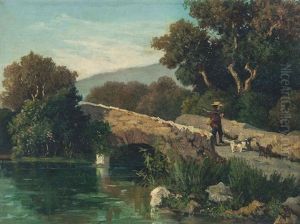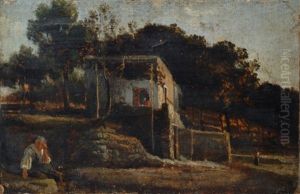Nicola Palizzi Paintings
Nicola Palizzi was an Italian painter associated with the School of Posillipo and known for his landscape paintings. Born on March 9, 1820, in Vasto, in the Abruzzo region of Italy, Palizzi showed an early interest in art. He had an initial training in Naples at the Academy of Fine Arts, where he was influenced by the works of Dutch landscape painters as well as the Barbizon school in France.
Palizzi's work was characterized by a meticulous observation of nature, which he translated into his canvases with great sensitivity and attention to detail. His landscapes are often serene, capturing the unique light and atmosphere of the Italian countryside. He was particularly adept at rendering the varying textures of foliage and the play of light on water and land.
During his career, Palizzi traveled extensively throughout Italy, drawing inspiration from its diverse landscapes. He was also among the first Italian artists to travel to the island of Capri, which became a recurring subject in his work. His paintings were well-received by critics and collectors alike, and he was a member of various artistic circles and institutions.
In addition to his landscape paintings, Palizzi also produced a number of animalier works, a genre that focuses on the realistic portrayal of animals. His brother, Filippo Palizzi, was also a well-known artist, and together they contributed significantly to the Italian art scene of the 19th century.
Nicola Palizzi's health declined in the later years of his life, and he died on September 4, 1870, in Giugliano in Campania. Today, his works can be found in various art museums in Italy and are celebrated for their contribution to the development of Italian landscape painting in the 19th century.




